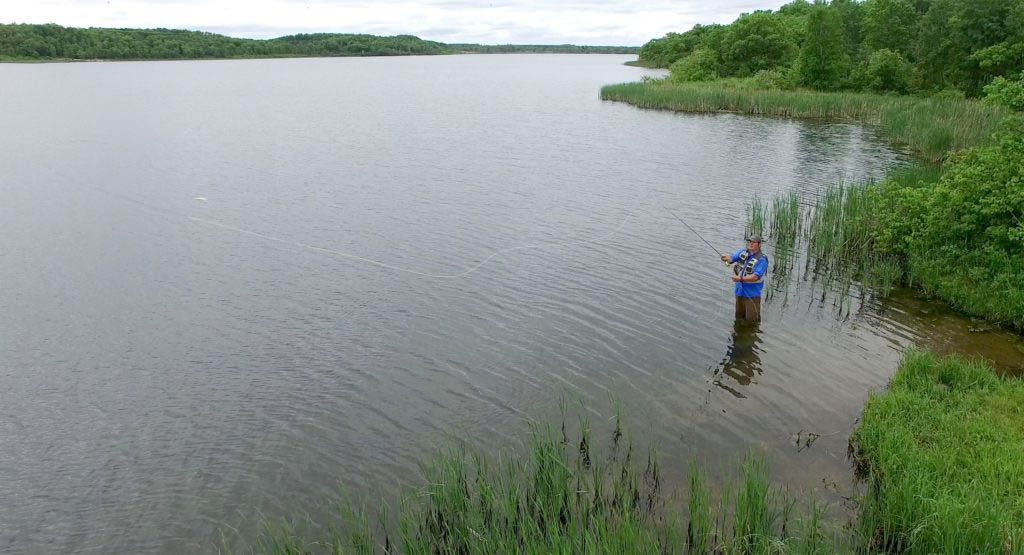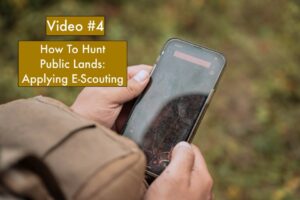
When I first started fly fishing, the “How To” articles I was able to find were very much focused on famous trout waters and exotic destinations. Learning about how to target Tarpon in the Florida Keys is exciting stuff to dream about, but the reality for me, is that any vacation time I have at this point in my life, I use it to take my children to visit their grandparents in Ontario.
This doesn’t mean I don’t get to fishing however, it just means that I have to look to local waters to get my fix. Back home in Ontario that means Otonabee River bass fishing from shore or Rice Lake for muskies and walleye. Here in Manitoba when I only have a few hours to fish, I’m likely going to be chasing channel catfish out at Lockport from the shore, jumping in my float tube or Jon boat to get after pike at Jackson Lake, or bass fishing in the Nopiming.
As I mentioned there is a lack of great articles about fishing lakes for pike or targeting bass on the fly. In fact, I could find very little good advice on these topics, let alone tips and tricks for fishing from a boat or shore fishing on a lake. I had to kind of wing it but here is what I’ve learned:
Lakeshore Fishing:
Like fishing in streams and rivers when chasing trout, I think that a pair of waders is the first piece of gear you should consider purchasing once you’ve got the fly rod and flies. Of course, you can spend a small fortune on waders from brands like Simms or Patagonia (and they are really nice waders), but I don’t think it’s necessary when you’re first starting out. You can pick up a set of waders from Cabela’s for under a hundred bucks.
I prefer stocking foot waders with wading boots because they are much more comfortable. They also give you more stability in moving water. That said if you’re shopping for your first pair of waders and don’t want to break the bank, a pair with attached boots will work just fine.
Felt or lugged soles? This question has been hotly debated on many forums and will likely continue to be argued about until long after the earth crashes into the sun. Felt soles, once wet they are super grippy and lower the odds of slipping and falling. When felt is dry though, it is super slippery and some states have even started to ban felt soled waders to prevent aquatic invasive species from sticking to the felt and transferring into their water ways. If you’re worried about aquatic invasive species, or you don’t want to slide, wildly out of control and screaming down any grassy embankments, stick with rubber lugged soles.
When I’m scouting shorelines for a great place to fish, I’m checking two things; First, I want to make sure I’ve got room to cast. That means, not a tonne of trees or bushes directly behind me. While this problem can be mitigated by putting on waders and getting into the water, sometimes the water is too deep which means casting from shore is your only option. If you don’t have the option of finding a nice clear space to cast, you can find great videos that will teach you how to roll cast, a method of casting that doesn’t involve a great big back cast although it is limited in distance.
The next thing I’m checking for is structure under the water. This includes fallen trees, rocks, a dock or even a drop off. The other thing I look for is weed beds with defined breaks where I can cast my fly along the edge of the bed. If I’ve got a promising looking weed bed or some great structure I know that I’m going to have a pretty good chance at a fish – especially if the lake holds pike or bass.
The other thing that might seem straight forward but often isn’t (anyone who’s ever been fishing at Lockport will know what it’s like), is to try to get away from the crowds. This can be near impossible sometimes, but I will spend the extra time and hassle hiking as far from crowded spots as I can get so I don’t have to worry about injuring someone with an errant false cast.
Fishing from a Boat or Float Tube:
The biggest challenge I’ve found when fly fishing from a small boat like a Jon boat, is what to do with the reams and reams of line that you strip in after a cast. For a long time, I’d try casting while simultaneously trying to unravel my fly line from the tiller, the gas tank, the boat seat, my fishing partner, and so on. Then one day, I saw something called a stripping basket.
Stripping baskets are used by fly anglers when saltwater fishing. These baskets can be worn on the waist and keep your line from floating away or becoming tangled. There are stripping baskets designed for fishing in big waves, ones designed for calm waters and ones even designed specifically for fishing out of a boat.
Stripping baskets made for boat fishing are generally a cylindrical bucket like a standard 5-gallon bucket that sits between your feet and helps control your line. I use a 5-gallon wine pail, and I’m embarrassed to say that I didn’t think of this the first time I went out. It took me a couple of years before I came across one. Consider this a public service announcement!
Float tubes are a little different from fishing in a boat in that you’re practically sitting on the water. I love my float tube, and when fishing a small lake or pond, I’ll bring my float tube every time. My favourite part of the float tube is that it’s silent. With a pair of flippers, you can silently navigate a body of water without spooking the fish.
I love sneaking into a shallow bay in the spring time on my float tube and target post spawning pike while they’re basking in the sun. Without a motor to alert them to my presence, I can get nice and close and there is nothing quite like getting pulled around by a big angry pike!
Because you are so close to the water however, a longer rod is a good idea. The longer rod gives you a longer cast but more importantly it helps to prevent the line from slapping the water on the back cast.
No matter what your budget is or how you decide to wet your line, remember that fly fishing is a super rewarding outdoor pursuit. Most importantly it is a lot of fun so if you’re on the fence, pick up a rod and head to your nearest lake, river, pond or stream and give it a try. You won’t regret it!
Next time we meet, it’ll be time for fall walleye on the fly! See you then!
Sidebar:
If you’re going to purchase a pair of waders but you’re on a budget, check out Cabela’s line of lightweight waders. They’re great quality and won’t break the bank. Visit www.cabelas.ca

